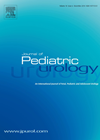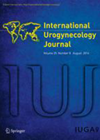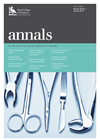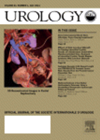
Journal Reviews
Cryotherapy in prostate cancer
This review of the literature aims to summarise what is known in regards to outcomes in patients undergoing cryotherapy in a number of settings: whole gland, salvage and targeted focal therapy. It highlights that more prostate cancers are being diagnosed...
Androgen insensitivity in patients with proximal hypospadias
A number of surgeons use preoperative androgen stimulation for a period of time prior to hypospadias surgery. The aim is to increase glans circumference, penile length and improve prepucial vascularisation pre-surgery. Data confirming the results of these aims is scarce....
Adolescents and adults in paediatric urology clinics
This elegant descriptive paper retrospectively reviewed cases seen in a paediatric urology clinic with respect to age, diagnosis and presentations in a major Brazilian city. Of 521 patients, 404 were <12 years old, 103 were between 12-18 and 14 were...
A novel approach to surgical management of the nutcracker phenomenon
The nutcracker phenomenon is defined as compression of the renal vein between the aorta and superior mesenteric artery and can present with loin pain, haematuria and a left-sided varicocele with treatment options including left renal vein transposition, superior mesenteric artery...
TPTNS: evaluation of a therapeutic option in the management of anticholinergic refractory overactive bladder
This is a prospective study evaluating the tolerability and efficacy of transcutaneous posterior tibial nerve stimulation (TPTNS) in patients with urodynamically proven overactive bladder (OAB), who have failed anticholinergic treatment. Forty-three patients were studied and followed up over a period...
Impact of adjuvant radiation therapy on urinary continence recovery after radical prostatectomy
The functional side-effects of both radical prostatectomy and radiotherapy for prostate cancer are well known. The aim of this study was to evaluate if there was a significant worsening in recovery of urinary continence in those undergoing radical prostatectomy followed...
Durability and complications of photoselective vaporisation of the prostate with GreenLightTM
Alternatives to the standard transurethral resection of the prostate (TURP) in the management of bladder outflow obstruction due to prostatic hypertrophy are becoming more common. In this retrospective case series, the outcomes of 117 patients undergoing GreenLightTM lithium triborate photoselective...
Patient-reported outcomes after prostate cancer treatment
This study used the survivorship (LIVESTRONG) care plan tool to identify patient-reported toxicities that occurred following treatment for prostate cancer. All patients had undergone treatments, which were considered to have similar oncological endpoints. The tool asked patients questions with regard...
Oestrogens and OAB
This is a multicentre study from Europe. The female genitals and lower urinary tract have a common embryological origin arising from urogenital sinus. Therefore, both could be sensitive to female sex steroid hormones. Oestrogens and progesterone receptors have been demonstrated...
Low dose PDE5I in IC
This is a randomised, double-blind, placebo-controlled trial to evaluate the efficacy of daily low-dose sildenafil (25mg) for the treatment of non-ulcer interstitial cystitis (IC) in women. Forty-eight women with clinical diagnosis of IC, from three centres, were equally randomised to...
Model to predict malignancy among Bosniak III cysts
This retrospective study over a 15-year period is to identify independent predictors of malignancy in Bosniak III (BIII) renal lesions and to build a prediction model based on identifiable clinical variables. These cysts, characterised by contrast-enhanced computed tomography (CECT), have...
Does one-year decline in eGFR after radical nephrectomy and in matched living donors match?
In the May issue of BJUI Miki N Hew et al. discuss differences in renal function evolution between patients with renal cell carcinoma (RCC) submitted to radical nephrectomy (RN) and living kidney donors matched for age and gender. They also...













